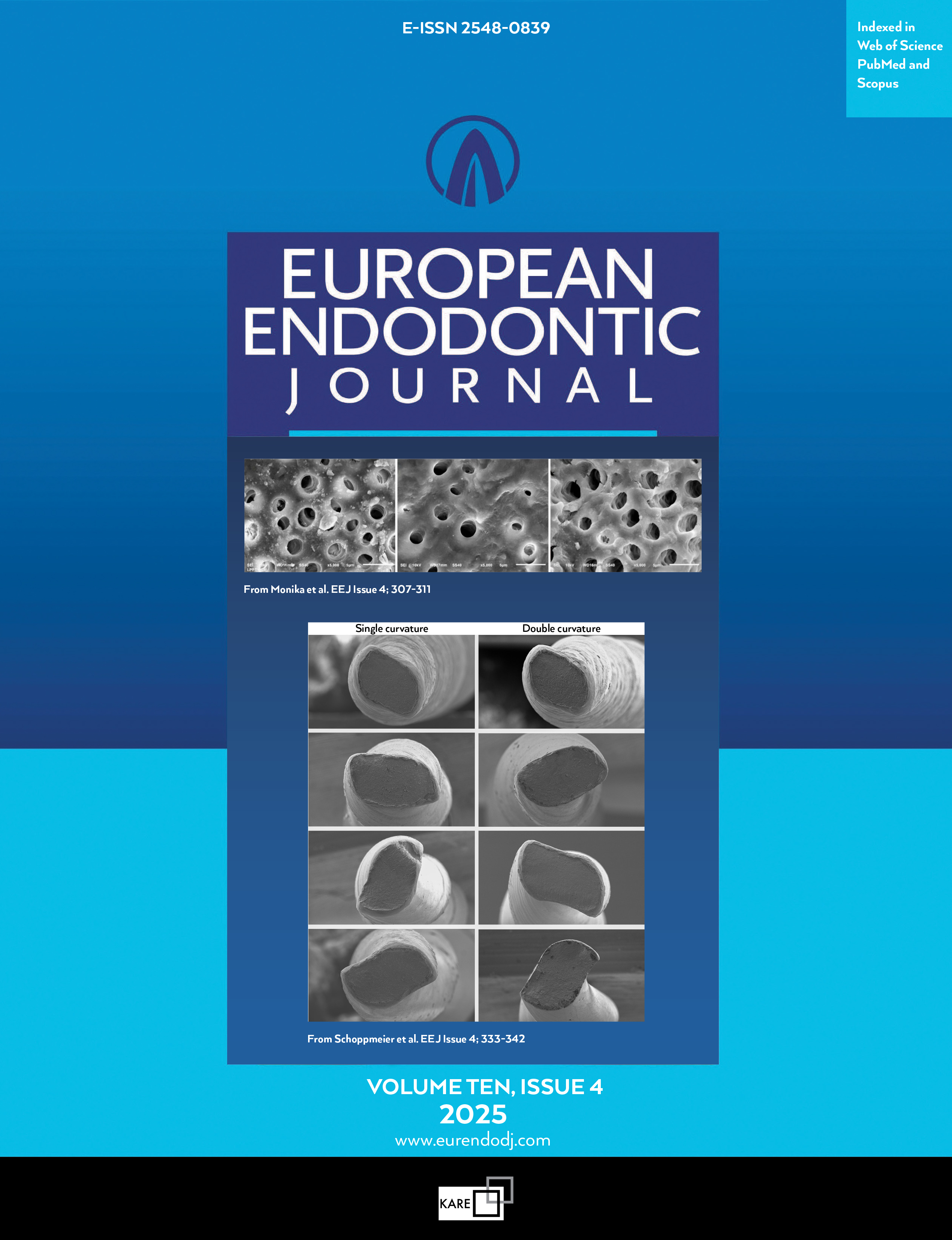Metrics
2024 IMPACT FACTOR
5 year Impact Factor
Eigenfactor Score
2024 CiteScore
Journal Citation Reports
(Clarivate 2025, JIF Rank)
Cleaning Effectiveness of QMix and EDTA When Activated with Different Techniques: An In Vitro Study
Didem Seda Gültekin1, Funda Kont Çobankara21Beyhekim Oral and Dental Health Center, Konya, Türkiye2Department of Endodontics, Selcuk University, Faculty of Dentistry, Konya, Türkiye
Objective: This comprehensive study was aimed to compare the effectiveness of QMix and EDTA, activated by different techniques, in removing apical debris and the smear layer.
Methods: The crowns of 180 single-rooted mandibular premolar teeth were removed, and the root canals were shaped up to #X4 using the ProTaper-Next rotary file system. Samples were randomly divided into six main groups according to the activation protocols (n=30). These groups were as follows: Manuel activation with 30G NaviTip needle (MNA), manual dynamic activation with gutta-percha cone (MDA), passive ultrasonic activation (PUA), EndoActivator (EA), XP-Endo Finisher (XP) and Photon Induced Photoacoustic Streaming (PIPS). Each leading group was then divided into three subgroups for the final irrigation solution (distilled water, 17% EDTA and QMix) (n=10). While debris was examined in the randomly selected five roots in each subgroup, the smear layer was examined in the others. A stereomicroscope with x25 magnification was utilised to examine the debris, and the specimens were evaluated using a 4-grade system. To assess the smear layer, scanning electron microscope images were taken at x1000 magnification at the apical third of the root canals and scored using a 5-grade scoring system. The statistical analysis of the data was performed by using the Kruskal-Wallis test (p<0.05).
Results: While XP and PIPS activation techniques were more effective than the other techniques at apical in terms of debris removal when using QMix (p<0.05), there was no statistically significant difference among the activation techniques when utilising EDTA (p>0.05). Regarding the removal of the apical smear layer, EDTA showed similar efficacy with all the tested activation techniques (p>0.05). Additionally, QMix was shown to be more effective when used in combination with MNA and PUA activation methods compared to MDA, EA, XP and PIPS techniques (p<0.05).
Conclusion: EDTA was found to be more effective than QMix in removing apical debris; however, OMix demonstrated its highest effectiveness when utilized with activation systems such as PIPS and XP. In addition, EDTA was found to be more effective than QMix in eliminating the apical smear layer. (EEJ-2024-08-139)
Manuscript Language: English
(286 downloaded)


